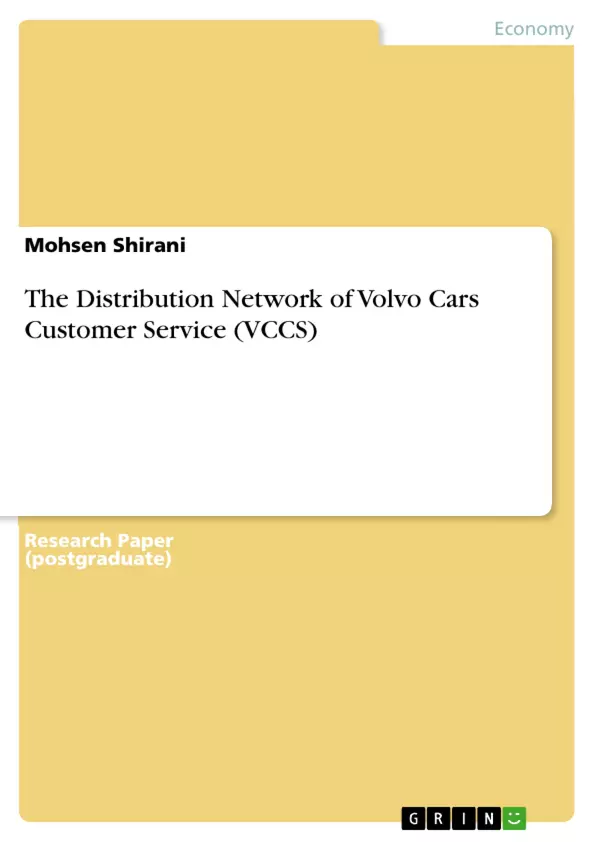This paper focuses on the distribution practices used by the company responsible for Volvo Cars’ spare parts and after-sale services, Volvo Car Customer Service (VCCS). VCCS has more than 1500 sales units in Europe, 400 in North America and 500 in rest of the world, with about 23000 employees at its dealers and workshops. The two main goals of VCCS are to increase customer satisfaction and to increase the volume of part sales. The empirical part in this paper is used for illustration of current distribution practices with special focus on spare parts in the automotive industry.
Inhaltsverzeichnis (Table of Contents)
- Introduction
- Purpose
- The Distribution Network of VCCS
- Logistic goal and strategy
- Actors
- Control
- TPL providers
- Resources
- Warehouses
- Information technology
- Activities
- The LDC Process
- Ongoing transformations
- Analysis
- The Logistics Strategy and Transformation
- Actors
- Control
- TPL providers
- Resources
- Warehouses
- Information technology
- Activities
- Conclusions
Zielsetzung und Themenschwerpunkte (Objectives and Key Themes)
This paper examines the distribution practices of Volvo Car Customer Service (VCCS) in relation to spare parts and after-sale services. It aims to provide a detailed analysis of VCCS's distribution network and its alignment with current distribution literature. The key themes explored in the paper include:- The impact of increased actor specialization and geographical dispersion on distribution networks.
- The challenges and opportunities presented by the growing need for efficient distribution in a globalized market.
- The role of information technology and transportation facilities in enhancing distribution efficiency.
- The importance of customer satisfaction and the need to balance service levels with cost reduction.
- The strategic importance of after-sales services in the automotive sector.
Zusammenfassung der Kapitel (Chapter Summaries)
Introduction
This chapter introduces the context of the paper, highlighting the increasing complexity of distribution networks in today's globalized marketplace. It emphasizes the importance of efficient distribution practices and the need to balance customer satisfaction with cost reduction. The chapter also introduces Volvo Car Customer Service (VCCS) and its focus on spare parts and after-sale services.The Distribution Network of VCCS
This chapter provides a detailed description of VCCS's distribution network, including its logistics goals, strategy, key actors, resources, and activities. It discusses the importance of global stock control, a global logistics process, and a global IT system for efficient network management.Analysis
This chapter analyzes the logistics strategy and transformation within VCCS's distribution network. It examines the roles of different actors, including TPL providers, and the resources used, such as warehouses and information technology.Schlüsselwörter (Keywords)
The primary focus of this paper is the distribution network of Volvo Car Customer Service (VCCS), examining its structure, strategies, and key components. The paper centers on the challenges and opportunities in managing a global distribution network in the automotive industry, highlighting the role of information technology, transportation facilities, and after-sales services in enhancing customer satisfaction and reducing costs.
Excerpt out of 16 pages
- scroll top
- Quote paper
- Mohsen Shirani (Author), 2010, The Distribution Network of Volvo Cars Customer Service (VCCS), Munich, GRIN Verlag, https://www.grin.com/document/191668
Look inside the ebook



